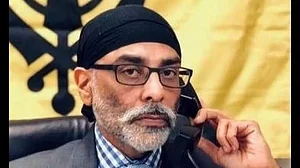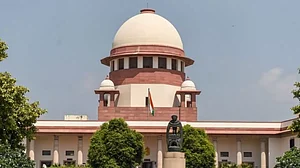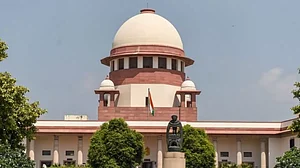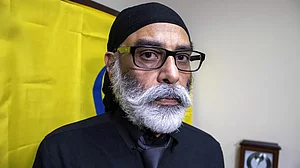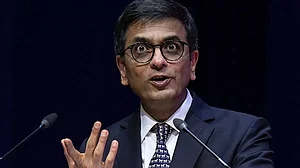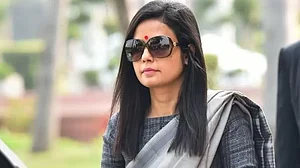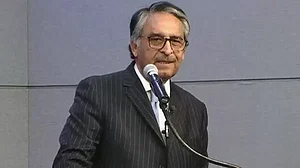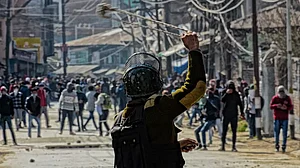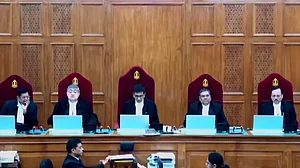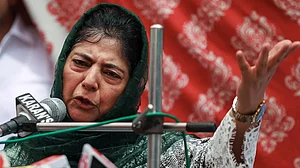
Name: The Supreme Court of India
Stands as the highest judicial authority and the supreme court of the Republic of India. It is the final court of appeal for all civil and criminal cases in India, and it wields the power of judicial review, making it a pivotal institution in the country's legal and constitutional framework. The court comprises the Chief Justice of India and a maximum of 33 fellow judges endowed with extensive original, appellate, and advisory jurisdictions.
The establishment of the Supreme Court marked a significant transition from colonial judicial structures. Before its creation, the highest judicial bodies were the Federal Court of India, established under the Government of India Act 1935, and the Judicial Committee of the Privy Council. The Supreme Court initially operated from the Chamber of Princes in the Parliament building, where the Federal Court had convened. In 1958, the court moved to its current premises, a building designed in an Indo-British architectural style by Ganesh Bhikaji Deolalikar.
The Supreme Court of India is vested with comprehensive jurisdiction and powers under Chapter IV of Part V of the Constitution of India, referred to as "The Union Judiciary." The court's jurisdiction includes:
Original Jurisdiction (Article 131): The Supreme Court has original jurisdiction in disputes between the Government of India and one or more states or between two or more states.
Appellate Jurisdiction (Articles 132, 133, 134): It hears appeals against judgments from High Courts in civil, criminal, and constitutional cases.
Advisory Jurisdiction (Article 143): The President of India can refer questions of law or fact to the Supreme Court for its opinion.
Review Jurisdiction (Article 137): The Supreme Court can review its judgments or orders.
Writ Jurisdiction (Article 139): The court can issue certain writs to enforce fundamental rights.
The Supreme Court's rulings are binding on all other courts in India, ensuring a unified legal system. Additionally, under Article 142, the court has the inherent power to pass any order necessary for complete justice.
The Supreme Court was initially envisioned with a Chief Justice and seven judges, which has been increased over the years by Parliament to accommodate the growing need for judicial intervention. Today, the court consists of the Chief Justice and up to 33 judges, who usually sit in smaller benches of two or three judges for most cases but come together in larger benches of five or more judges for constitutional and significant legal questions.
The President of India appoints the Supreme Court judges on the collegium's recommendation. This system includes the Chief Justice and the four most senior judges of the Supreme Court. This system has been criticized and challenged but remains the method for judicial appointments after the Supreme Court struck down the National Judicial Appointments Commission (NJAC) as unconstitutional in 2015.
One of the most critical powers of the Supreme Court is judicial review. This power allows the court to invalidate laws and amendments that violate the Basic Structure Doctrine of the Constitution, ensuring that no law or executive action can undermine the fundamental framework of the Constitution. This doctrine was established in the landmark case of Kesavananda Bharati v. State of Kerala (1973).
The Supreme Court plays a crucial role in safeguarding the fundamental rights of citizens. Through its writ jurisdiction, the court can issue writs like habeas corpus, mandamus, prohibition, quo warranto, and certiorari to enforce these rights.
The President of India can seek the advisory opinion of the Supreme Court on any question of law or fact of public importance. While the court's advice is not binding, it carries significant weight and can influence governmental decisions.
Despite its crucial role, the Supreme Court has faced criticism and controversy. Allegations of corruption, accusations of political bias, and debates over the collegium system for judicial appointments have marred its reputation at times. The court's decisions during the Emergency (1975-1977), particularly in the Habeas Corpus case (ADM Jabalpur v. Shiv Kant Shukla), which upheld the suspension of fundamental rights, remain contentious.
The independence of the judiciary is a cornerstone of the Indian Constitution, and the Supreme Court has strived to maintain this principle. However, the post-retirement appointments of judges to governmental positions have raised concerns about potential conflicts of interest and the independence of the judiciary.
The Supreme Court of India is a guardian of the Constitution and the fundamental rights of citizens. With its extensive powers and responsibilities, it plays a vital role in maintaining the rule of law and delivering justice in the country. Despite facing challenges and criticisms, the Supreme Court remains an indispensable institution in India's democratic framework, continually evolving and adapting to uphold justice and constitutional values.
